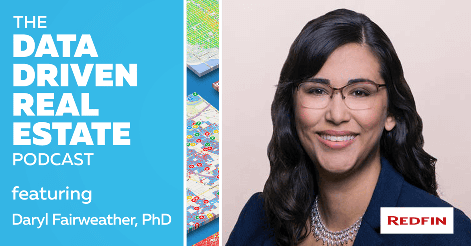What’s Driving The Migration Back To Big Cities?

Return-To-Office Mandates, Gen Z Trends, And More Are Sending Americans Back Downtown
There’s nothing quite like witnessing the splattering colors of a springtime sunrise across a city skyline.
Stare at the brilliant splashes of pink and orange long enough, and you’ll understand why so many Americans have historically fled to city centers.

Thriving industries and economic growth encouraged millions to make their way to U.S. cities between 1880-1900. And as business grew and incomes rose, the roaring 20s ushered in a continued wave of living large in metropolis destinations.
Throw in the invention of automobiles and public transportation, and as cities grew, populations boomed right alongside them.
And now, as we drive forward through the 21st century, there’s a distinct hustle and bustle to thriving downtowns. Rich in culture and steeped in the hopes and dreams of its inhabitants, city centers are the steady heartbeat of our nation – beautiful tapestries of concrete jungle wrapped in roaring taxi cabs and crowds of strangers all here wanting something more.
Hubs of power, towering skyscrapers, and melting pots of cuisine and art and new experiences – cities have always introduced us to the new, the innovative, the cutting edge.
But just as dazzling as the flickering fluorescents of Broadway and the starry night sensation of hot-rolled steel railways – was the enviable appeal of home ownership, which became a legitimate possibility for many with the rise in subdivisions and suburban communities. Made famous by William Levitt, he launched his first expansive neighborhood in Long Island, New York in 1946.
Suddenly, the allure of cherry pies cooling on the windowsill and white picket fence living had officially entered the chat.
.jpg?width=2095&height=1170&name=iStock-1716450488%20(1).jpg)
Rural landscapes transformed into tight-packed communities, ushering tens of millions of Americans into a massive exodus, gladly swapping multi-unit lifestyles for a taste of single-family homes. Planned communities grew like wildfire, expanding over 120% between 1940 and 1950.
And as wartime ended, focus shifted to consumer goods. Soon, the Mad Men market of bubblegum pop soda fountains, toaster ovens, and the home TV took over the airwaves, and people were hooked.
And while the years that followed saw ups and downs in homeowner preference, America endured a drastic shift in the market in 2020, thanks to the COVID-19 pandemic.
Now, commuting to the office was a thing of the past, and suddenly, working shoulder-to-shoulder with your spouse at the dining room table, quieting the dog during your conference calls, and troubleshooting your kids’ online learning tablets every five minutes of every day was the new norm.

So, for many, many obvious reasons – space was now (even more) in. Home offices, bigger lots, spacious yards. Hey – if you’re not commuting, you may as well be able to walk a whole five feet from your nearest family member, right?
But in this post-pandemic era, we’re beginning to see a shift.
As lifestyles begin to normalize and lockdowns descend into the voids of bad memories past, there’s a movement happening – a rush back to urban areas and city centers, a herd of young millennials and Gen Z patrons running to snatch up space in the throws of bustling metropolises.

Now, decades after he hard-launched the suburbs, William Levitt has officially paved the way for the most antagonizing dinner table conversation of all time.
City vs suburbs? Which is best?
And if suburbs have recently reigned supreme, why the shift?
Post-Pandemic Return-To-Office Mandates Are Driving Homeowners Back To Cities
The new normal of waking up and commuting the grand distance from our bed to our home office hasn’t lasted for all.
Many corporations, including Google, Goldman Sachs, JPMorgan, and more, are turning the tides on remote working and demanding in-office presence, which has caused complications for many who may have moved, completely relocated, or were even hired remotely far from headquarters.
To avoid enormously long commutes to city centers or to simply keep their jobs, American homeowners are now faced with a tough reality.
And according to a recent Redfin survey, 1 in 10 sellers will be putting up that For Sale sign and moving due to these office mandates.

While a transition back to city living may sound thrilling to some, not everyone’s circumstances lead to moving on up.
Redfin quoted real estate agent Shauna Pendleton, who noted her clients were forced to give up their new home in Boise, ID, in order to make the move to Seattle, WA, for their careers.
“My sellers both work at the same company, which told them they have to be in the office three days a week or they’ll lose their jobs. They have six months to make the move.”
The worst part? The loss of equity in their current house.
“They’ll probably have to take a $100,000 loss on their home.”
And even with 64% of U.S. workers in support of a remote working schedule, many don’t have the luxury of choice.

So, while we’ll continue to see upticks of office employees making their way back to headquarters, it is important to note that in-office requirements are not the only trend that’s driving Americans back to the cities.
Gen Z Preferences See Big Cities Rise In Popularity
Demanding an end to side parts and skinny jeans aren’t the only waves Gen Z is making. They’re bringing back cities, and they’re bringing them back in a big, big way.
For those sitting squarely within Gen Z who are 18-24 years old, this pivotal time in their lives proves a fruitful opportunity to relocate, whether for higher education, new careers, or a new adventure.

In 2023, Gen Z-ers flocked to college cities, such as Ann Arbor, Michigan, and Provo, Utah, where they make up nearly 36% and over 42% of the city populations, respectively. Boulder, Colorado, and College Station, Texas, also made the list, with Boulder boasting the highest rate of Gen Z-ers relocating into the city from the suburbs.
But this mass movement isn’t restricted to hometowns of college football and university communities.
The biggest cities across the U.S. – New York City, LA, Chicago, Houston, and Philadelphia – were all recipients of Gen Z movement. And while these younger residents set up homes within city centers, alternate generations were abandoning downtowns (with over 96,000 millennials leaving New York City and over 15,000 departing Chicago).
Meanwhile, over 3,000 Gen Zers are now calling the City That Never Sleeps their new home while also rushing to settle in other East Coast locations, like Washington, D.C., Columbia, South Carolina, and Boston, Massachusetts.
Are All Millennials Escaping To The Burbs? Hardly.
Don’t let the above stats fool you.
While plenty of millennials are growing up, settling down, and looking to expand their families in larger properties, not all are leaving the downtowns they know and love.
With reasons for their city move ranging from job growth and income to proximity to necessities such as restaurants and coffee shops, millennials know what they like. And for many? That lies within the vibrant downtowns of America’s cities.
They can experience culture, arts, and entertainment and often have the salaries to thrive in the higher-priced communities around them.

And just because we’re seeing droves leave Manhattan does not mean all cities are a turn-off.
Millennials are loving Cambridge, Massachusetts – where they currently make up over 37% of the population. Santa Clara, California, and Seattle, Washington, round out the top three.
But other cities are still seeing movement for those between 25-44.

Washington, D.C., saw over 64,000 millennials move in, according to a 2023 study, while Austin, Texas, had roughly 103,000 calling the Lone Star State’s capital city home. Portland, Oregon, saw a high rate of millennials moving in (9.52%), as did Minneapolis, Minnesota (8.86%).
So, while the suburbs and subdivisions may still reign king for many looking for more space for less, there are clearly those who want to raise families in the center of the action.
Crime Rates Are Nearing Pre-Pandemic Levels
Crime rates are slowly lowering, which may drive renewed interest to urban centers.
2023 data reported a 10% drop in homicides across some of the largest U.S. cities, including New York City, Chicago, Los Angeles, and Houston. In addition, there were fewer residential burglaries and an over 8% drop in violent crime from January-September 2023.
While it’s still vital to note the higher crime rates in cities versus suburban areas, the data showcases things are steadily moving in the right direction.
How Can You Be Prepared To Help Those Heading To City Centers?
Regardless of the reason for the big move, you want to be on the right side of preparedness to help any prospective buyers make a seamless transition back into the hustle and bustle of downtown.

Ask the right questions and personalize your search.
Will Gen Z buyers be looking for multi-bedroom condos in the best school districts? Probably not. Cluing into the reason for the move will assist you in finding specific properties just right for your clients and their lifestyles. Relocating due to return-to-office mandates? Make sure you focus on residences with close proximity to headquarters while incorporating amenities they may have loved about their former locations.
Connect with out-of-state connections and step in as a referral.
For those homebuyers who may know a city is their next stop but are unsure of which, make sure you become an expert in multiple markets that are desirable to them. Whether that means getting licensed in multiple states to widen the net of who you can help or stepping in as a referral agent to realtors out-of-state. Sending them clients with interest in their surrounding communities should drive clients your way in return. This ends with happy clients and shared commissions all around.
Find your clients early and knock out the competition.
Tap into public records data or a handy lead generation platform, such as PropertyRadar, to proactively outreach to clients that may soon be prospective movers. Look for expanding families with high equity, families with teens who are nearing high school graduation, and millennials who may be faced with a return-to-office mandate.
Alternatively, you can also deep dive into prospective properties this way, and see what city properties may be great options for those looking to move from the suburbs to downtown.
Now that you know a great migration is happening, the next thing you can do is get prepared.
So, what are you waiting for?

Get started now with a free PropertyRadar trial and discover over 150 million properties nationwide.



